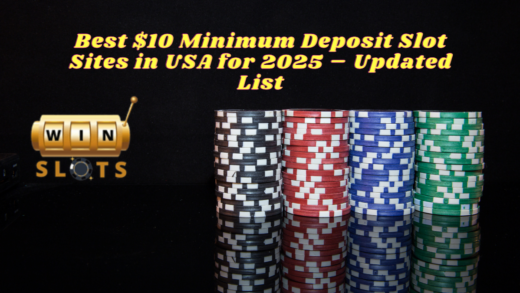Ever wonder why some slot machines seem to pay out frequently while others seem to eat your balance with little return? It’s not just luck—there’s real math behind the madness.
Understanding slot machine RTP, volatility, and payout percentage can help you make smarter decisions, whether you’re playing online or in a land-based casino.
In this guide, we’ll break down how these factors work, what they really mean for your bankroll, and how you can use this knowledge to your advantage with practical slot tips.
What Is RTP? (Return to Player)
RTP stands for Return to Player and is one of the most important figures in slot gaming. Simply put, it represents the average amount a game returns to players over many spins, expressed as a percentage.
Example
A slot machine with a 96% RTP will theoretically pay back $96 for every $100 wagered—over a long period of time. This doesn’t mean you’ll get $96 back every time you play.
Instead, it’s a statistical average calculated over thousands or even millions of spins.
Slot Machine RTP Explained in Simple Terms
Think of RTP like the house edge in reverse. If a slot has 96% RTP, the house edge is 4%. That 4% is how the casino profits in the long run.
RTP is built into the game’s software and regulated by gaming authorities, especially in licensed markets like the U.S., UK, or EU.
- Higher RTP (96%-98%) = better for players over time
- Lower RTP (below 94%) = generally less favorable for long-term play
Slot tip: If you’re playing for longer sessions, look for slots with an RTP of 96% or higher. Many reputable online casinos clearly list this in the game details.
What Is Volatility (a.k.a. Variance)?
While RTP gives you an idea of how much a slot pays back over time, volatility tells you how it pays out.
- Low volatility slots pay out smaller wins frequently
- Medium volatility slots offer balanced play with moderate risk
- High volatility slots pay less often but offer the potential for large jackpots
Real-Life Analogy
Think of volatility like weather patterns. Low volatility is like light rain throughout the day—consistent but not extreme. High volatility is like a thunderstorm—rare, but intense when it hits.
How RTP and Volatility Work Together
Here’s where it gets interesting: two slot games can have the same RTP but feel totally different. A high volatility game with 96% RTP might drain your balance quickly before hitting a big win.
A low volatility game with the same RTP might give you more consistent small wins that stretch your session longer.
Slot tip: Choose low volatility for casual, longer play and high volatility for high-risk, high-reward sessions.
How to Check RTP and Volatility Before You Play
Most regulated online casinos now include RTP in the game info section. Volatility is sometimes labeled, but if not, look at the game’s paytable:
- High max payouts and rare features usually indicate high volatility
- Frequent bonus rounds and low maximum wins suggest lower volatility
Example
- Starburst – Low volatility, ~96.1% RTP
- Dead or Alive 2 – High volatility, ~96.8% RTP
- Gonzo’s Quest Megaways – Medium to high volatility, ~96.0% RTP
Smart Slot Tips for Realistic Play
- Know your goals – Play high volatility if chasing big wins, low for longer entertainment.
- Set a bankroll limit – Never chase losses. Slots are games of chance.
- Use bonuses wisely – Match deposits and free spins can boost value.
- Check RTP before you spin – Especially on unfamiliar or flashy new games.
- Don’t believe in “due” wins – Every spin is random and independent.
Recommendation
Slot Machine Payouts: Schedule and Percentages
The Psychology Behind Slot Machines – Why You Keep Spinning
How to Maximize Winnings on US Slot Machines: Tips and Tricks
The History of the Slot Machine
Monopoly Slot Machines Odds | Everything You Need to Know
FAQs
Q1: What is a good RTP for slot machines?
A1: A good RTP is typically 96% or higher. It means you’re getting a better long-term return compared to games with lower RTP.
Q2: Does higher RTP mean more frequent wins?
A2: Not necessarily. RTP affects long-term return, while volatility influences how often and how much you win in a session.
Q3: How can I tell a slot’s volatility?
A3: Check the game info, paytable, or look for clues like max payouts, hit frequency, and bonus features. High risk often means high volatility.
Q4: Can casinos change a slot’s RTP?
A4: Licensed and regulated casinos cannot alter RTP on their own. Game providers set RTP values and are audited by independent gaming authorities.
Q5: Is there a way to beat slot machines?
A5: No. Slots use RNGs to ensure random outcomes. However, playing high-RTP, low-volatility games and managing your bankroll can improve your experience.
Conclusion
Understanding how slot machine RTP and volatility work can shift you from a casual spinner to a strategic player.
While no formula guarantees a win, knowing the difference between payout percentage and risk level helps you choose games that match your play style and budget.
Keep these slot tips in mind next time you hit the reels—and remember, knowledge is your best bet.



